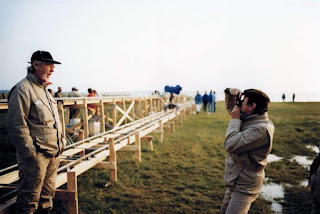Nosferatu (1922), F.W. Murnau
F.W. Murnau's monumental orchestra of horror sets its milestone as it inspires generations of generic horror and thrillers through technical absolution and with an accrued spookiness in the very ambiance.
'Nosferatu' accounts for arguably the most brilliant usage of shadows and silhouettes in cinematic screenings, only with Vampyr (1932) giving it the toughest run for the money.
'Nosferatu' opens in Bremen, Germany as the narrative introduces us to an estate agent, Hutter (Gustav von Wangenheim) and his young wife, Ellen (Greta Schröder). Hutter is manipulated to embark on a journey to the Carpathian Mountains to sell a Bremen house to the mysterious Count Orlock (Max Schreck). Overtly irking and superstitious natives warn Hutter not to travel to the Count's castle, but greed overrides statutory warnings, producing an interesting outlook to the character which undoubtedly reflects in the plot's eventuality. After completing the manipulative transaction, Hutter discovers Orlock's true nature and it unfolds to us that he is a horrific night creature who lives on blood and sleeps in a coffin, finally disclosing the 'Dracula' on which the entire film is based. It is Max Schreck's indomitable performance that leaves aside any theatrics which succeeds in the perilous portrayal of a phantom.
However, with the successive acts, the elements of sexual aggressiveness subtly mend in without a clear distinction as to when Orlock loses interest in Hutter and starts a miserable persuasion on his wife herself, which was intentionally romantic and thus the narrative's procuring of a sexual angle; even might that be on a subtext.
Nosferatu's' potentiality on its horror is absolutely terrific, the quality of which has shaped and formulated many psychopathic serial killers and ghastly monstrous cinematic antagonists in their respective films of horrors and thrillers. The qualitative traits of the horror classic are derived from the eerie ambiance and visual motifs that create a strong frightful aura throughout, starting from the finishing segment of the first act itself.
The narrative structure of 'Nosferatu' is obstinate and not quite eccentric as it retains the theatrical values of segmenting itself into five distinctive acts which are used in delivering the ultimatum and preserving the conundrum of Orlock.






Comments
Post a Comment